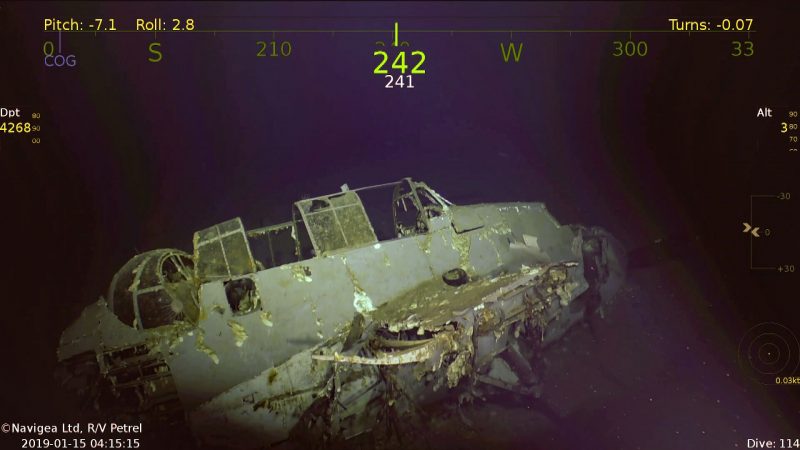The wreck lay 2.5 miles down in an area known as an abyssal plane. There is no light and little animal life as well as massive pressure.
The discovery of sunken wrecks seems to hold an eternal fascination. Although the quest to find them takes a huge amount of resources and technical skills, the quest goes on. Many searches have focused on the wrecks of warships lost during the Second World War. One of the most recent successes, despite many difficulties, was the discovery of USS Wasp (CV-7) deep in the Pacific Ocean.
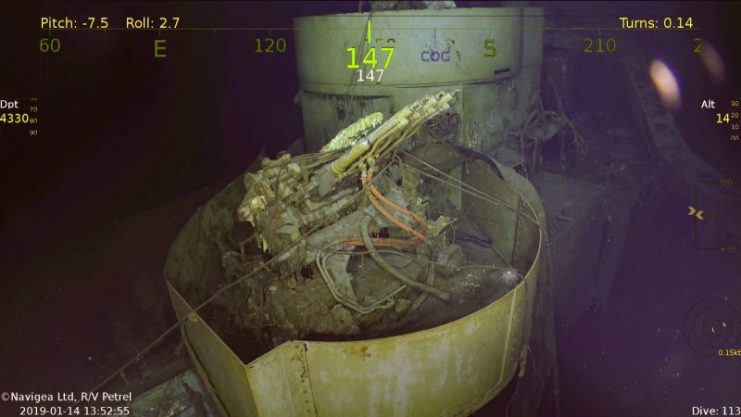
The story of Wasp‘s end begins in September 1942. The aircraft carrier set out with 71 planes and a crew of more than 2,000 men on board to escort a convoy of US Marines to Guadalcanal, one of the Solomon Islands in the South Pacific. In the middle of the afternoon, Wasp was hit by Japanese torpedoes which caused serious damage.
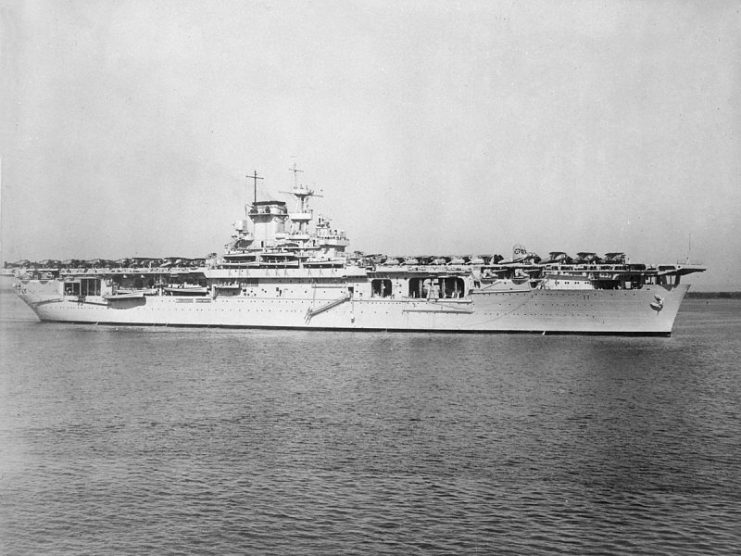
The worst part was that the torpedoes had hit the magazine, setting off a series of explosions. The fire quickly spread, and the ship was also taking on water from the torpedo damage. Soon it began to tilt, and oil and gasoline that had spilled were set ablaze on the water. Captain Sherman had no choice but to give the order to abandon ship.
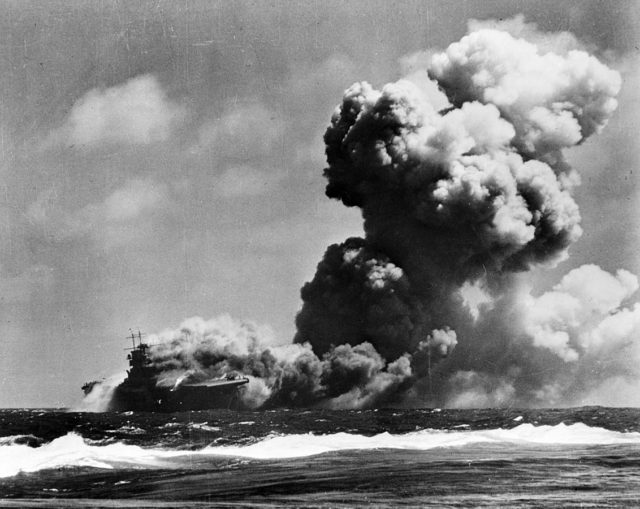
Evacuation and rescue
Those who were most seriously injured were lowered into life rafts. Those who could not find a place in a life raft had no choice but to jump into the sea. There they held on to whatever debris they could to keep them afloat until they were rescued.
Captain Sherman commented later that the evacuation of the ship was remarkably orderly under the circumstances. He also noted that sailors had delayed their own escapes to ensure that their injured comrades were taken off the ship first.
The first torpedoes had been spotted at 2:44 PM. By 4 PM, once he was sure that all the survivors had been removed, Captain Sherman himself abandoned ship. In that short time, Wasp had been destroyed along with many of the aircraft it was carrying, and 193 men died.
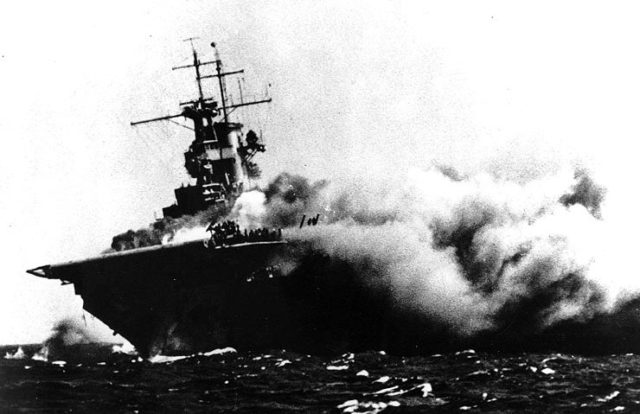
Despite the danger involved, the destroyers which had accompanied Wasp carried out a remarkable rescue operation and managed to bring 1,469 survivors to safety.
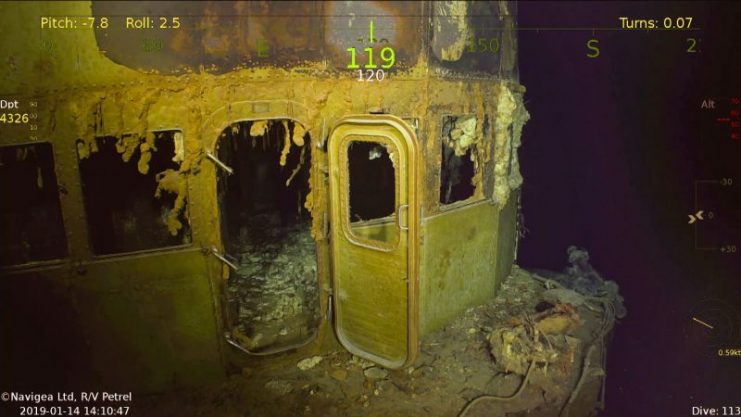
The ship drifted on for four hours until orders were given that it should be scuttled. The destroyer USS Lansdowne came to the scene, and another volley of torpedoes eventually sank the ship into the depths of the Pacific Ocean.
RV Petrel
The discovery of the wreck was largely due to the philanthropy of the late Paul Allen, co-founder of Microsoft. Allen had a lifelong enthusiasm for underwater exploration and a fascination with WWII wrecks. He provided the substantial sums required to fit out the Petrel exploration ship through his undersea exploration organization.
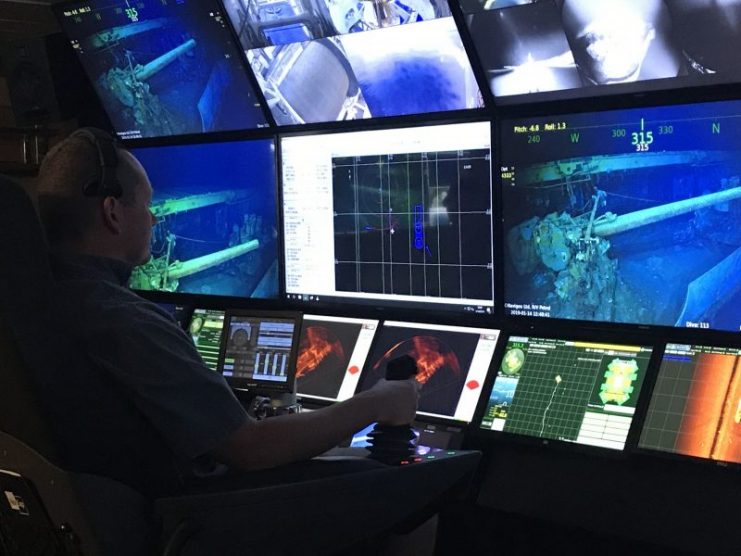
Petrel is equipped with state of the art technology including undersea drones, robots, and scanners. It has been used to locate many wrecks. The project was led by Rob Kraft, Director of Subsea Operations for Vulcan Inc., which was founded by Allen.
The search for the wreck begins
The quest to find Wasp looked likely to be one of their more difficult tasks. The wreck lay 2.5 miles down in an area known as an abyssal plane. There is no light and little animal life as well as massive pressure, making it one of the most inhospitable and inaccessible areas of the ocean.
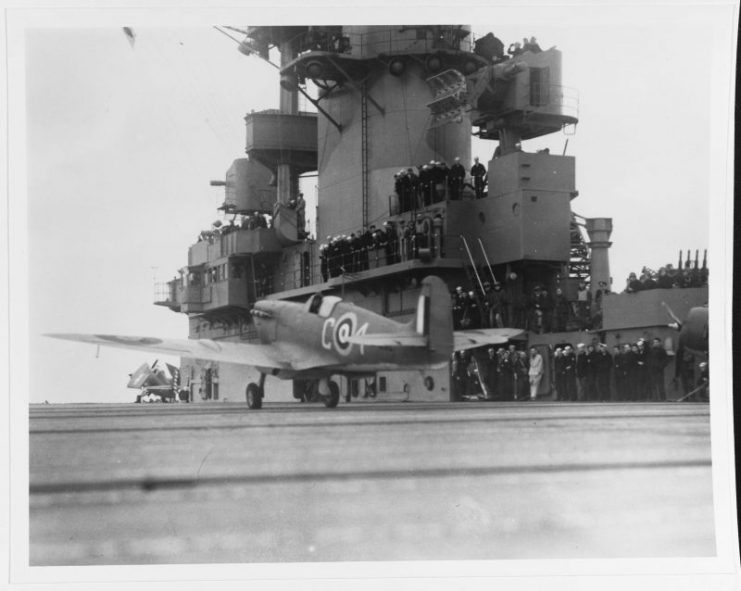
In addition to this, the researchers were hampered by conflicting information about the most likely location of the wreck. The crew worked out its possible location based on the information from the navigator of Lansdowne, which had scuttled Wasp.
However, navigational techniques during the Second World War were still mostly based on celestial navigation, using the stars and simple instruments such as a sextant. These tended to be less than accurate for pinpointing an exact position. To further complicate matters the information from Lansdowne conflicted with the information provided by the navigator of Wasp.
Discovery of debris leads to false hopes
Time to find the wreck was limited as Petrel had a full schedule of exploration ahead of it, in which 15 days had been allocated to the search for Wasp. This seemed like a reasonable amount of time. But one of the features of working at this kind of depth is that instruments and equipment sent out to investigate can behave in unpredictable ways.
Still, despite a few such technical glitches, things began to look quite hopeful. Images brought back by drones showed debris scattered on the ocean bed. The crew homed in on this area and although they found more debris, there was no sign of the ship. The debris was scattered over a wider area than they expected.
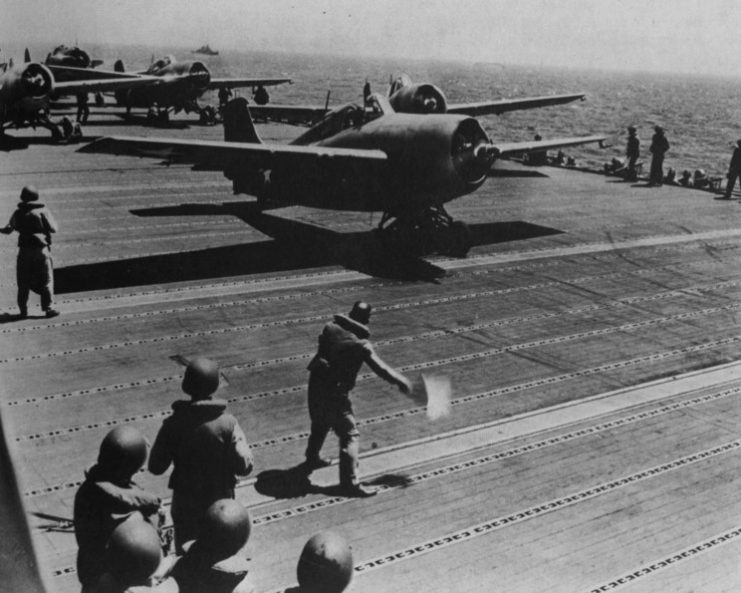
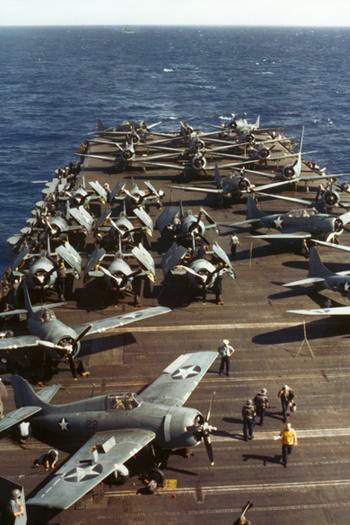
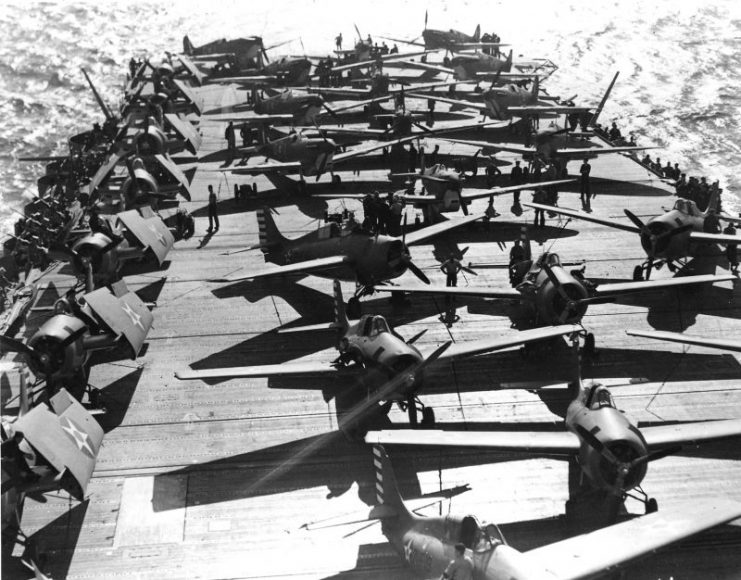
The missing piece falls into place
The head of the exploration, Rob Kraft, and his team puzzled over this until Kraft came up with an explanation. He realized that some of the debris had most likely come from two other ships, the battleship USS North Carolina and destroyer USS O’Brien, which had been part of the convoy and were each damaged by torpedoes that had missed Wasp.
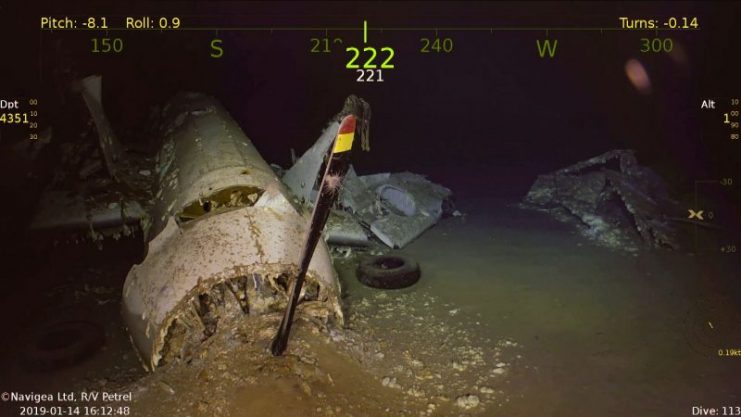
Kraft and his team recalculated the possible location based on the distance between Wasp and the other two ships at the time of the torpedo attack. They realized that they needed to look much further south. It seemed that the navigator on Wasp had provided the most accurate location information after all.
The crew once again sent out drones to scan the area and on January 14, 12 days after their mission began, their hard work was rewarded. They located the wreck. Despite the massive damage, Wasp could be seen clearly in the underwater photographs, sitting upright on the seabed and surrounded by helmets and other debris that served as reminders of its dramatic history and tragic end.
The exact location of the wreck remains a closely guarded secret to avoid the risk of scavengers looking for valuable relics from the ship. There are no plans to attempt to raise the wreck, but its discovery has brought satisfaction to the few remaining Wasp survivors and their families.
